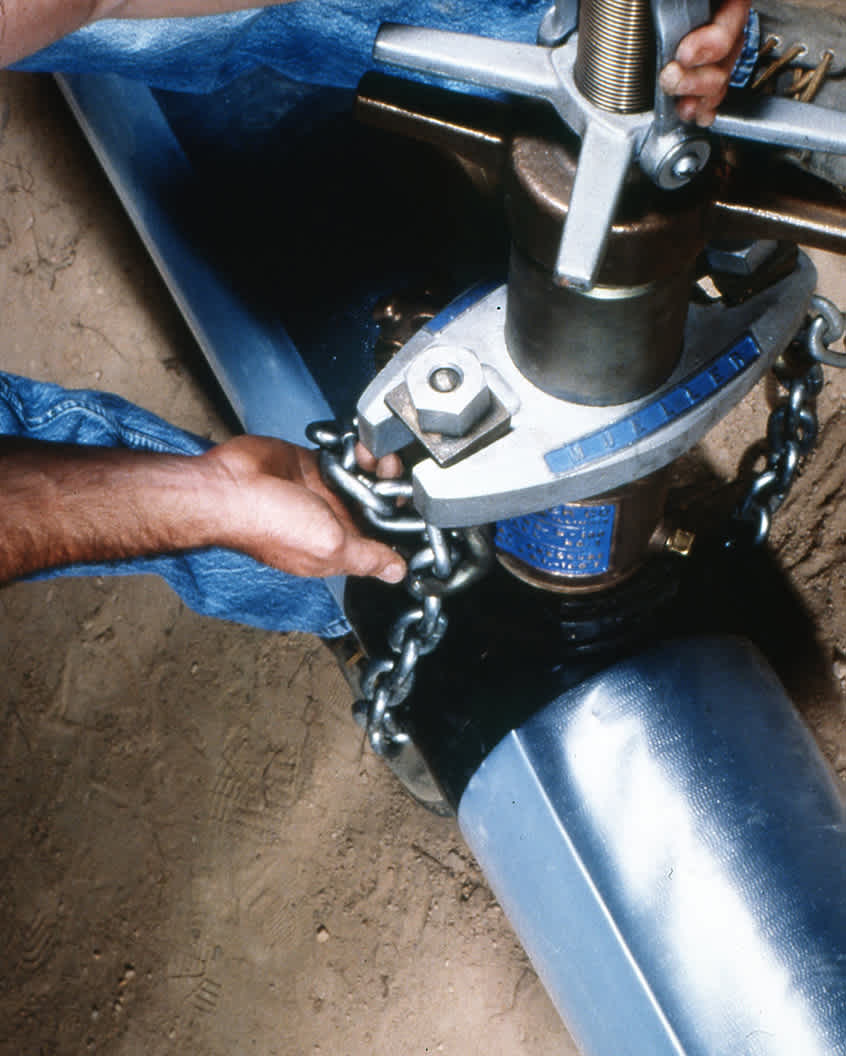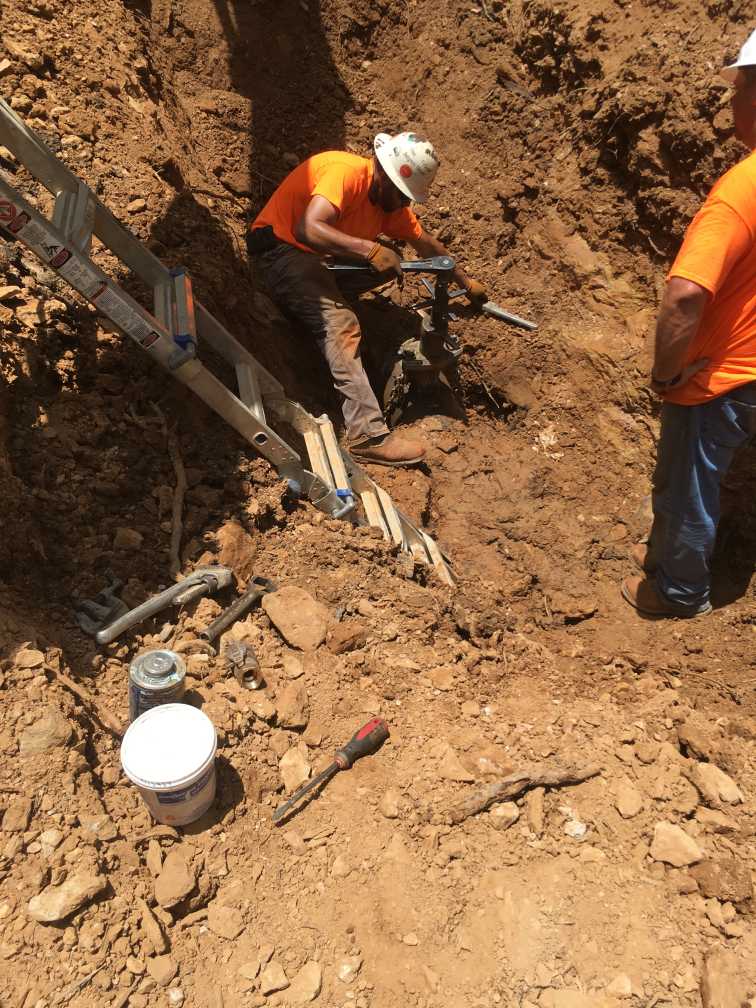Tapping
Direct Tapping of Ductile Iron Piping Encased in Polyethylene
Direct service tapping of operating cast and Ductile iron piping systems has been a common practice for more than 100 years. For the last 40 years, more and more direct taps have been performed on polyethylene-encased iron pipe. Generally, polyethylene-encasement of Ductile iron piping is limited to corrosive environments where the need for protection is warranted. Thus, it is essential that the integrity of the polyethylene be maintained.

Tapping Ductile Iron Pipe
Efficient and Safe
There is a reason that the tapping competitions held at water industry conferences use Ductile iron pipe. It is faster and safer to direct-tap Ductile iron pipe than any other pipe material.

Tapping
Direct service tapping of operating cast and Ductile iron piping systems has been a common practice for more than 100 years. Ductile iron pipe can be readily field cut and tapped to fit normal and emergency situations.
Direct Service Connection Installation Comparison: Ductile Iron Pipe vs. Polyethylene Pipe
This technical publication reports on tests comparing direct tapping of Ductile Iron pipe with sidewall fusion of service connections on polyethylene pipe. Time, internal pressure, material strength, and other factors of both materials were compared with respect to tapping.
Tapping Ductile Iron Pipe vs. PVC
DIPRA conducted tests comparing the direct tapping of Ductile iron pipe and polyvinyl chloride pipe. Cost, time, internal pressures, material strength, and other factors were also compared with respect to tapping. All tests were conducted using prescribed procedures for each material.
Tests reported herein reaffirm that Pressure Class 350 Ductile iron pipe can be direct-tapped with confidence and that the resultant thread engagement is more than adequate to effect a watertight seal. Read the publication to learn more.

